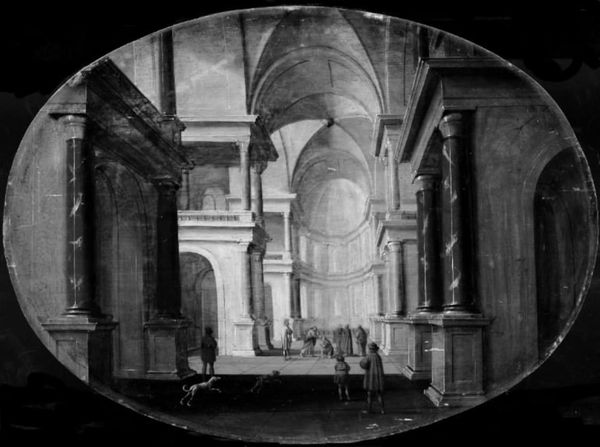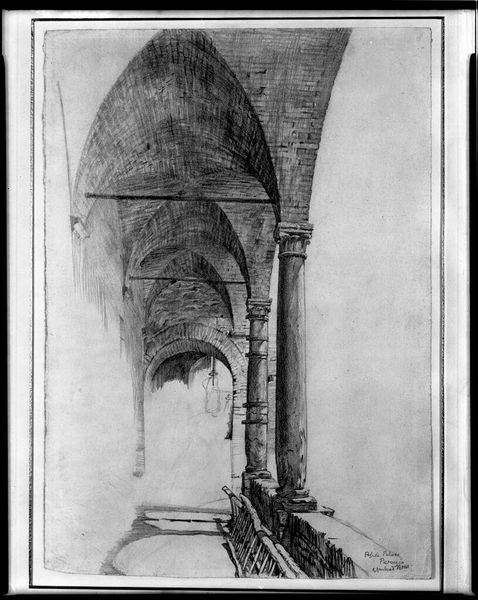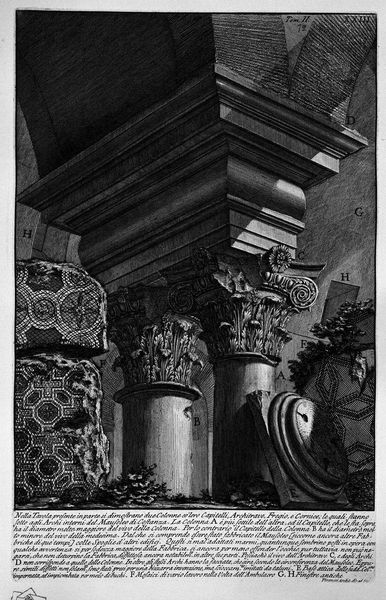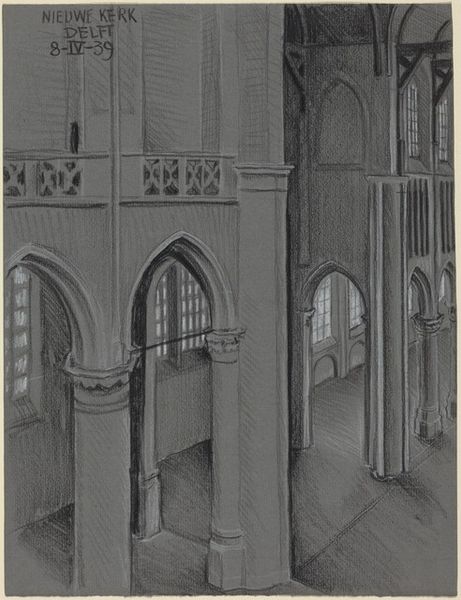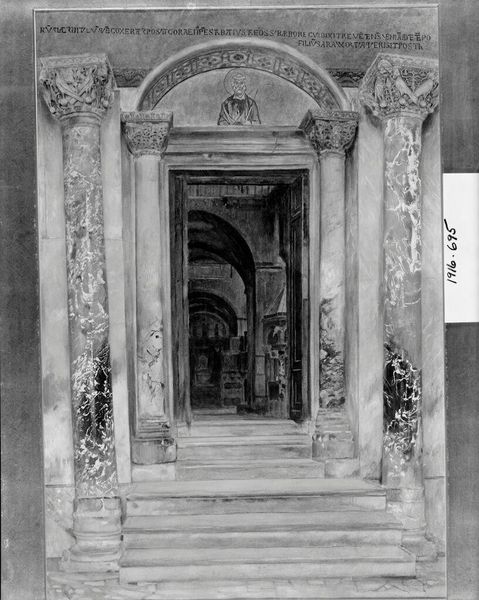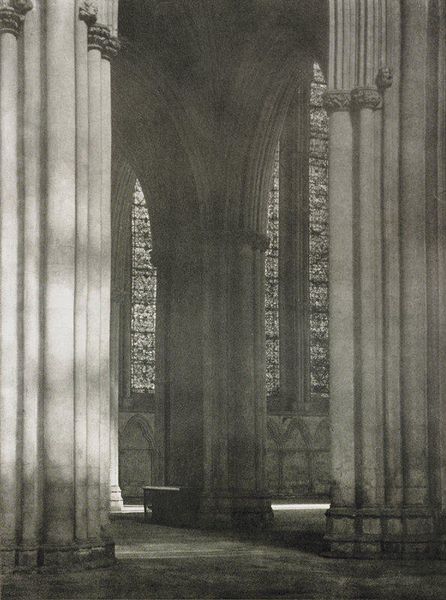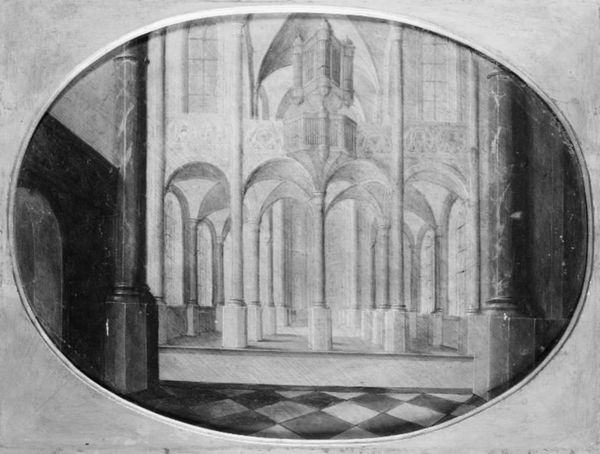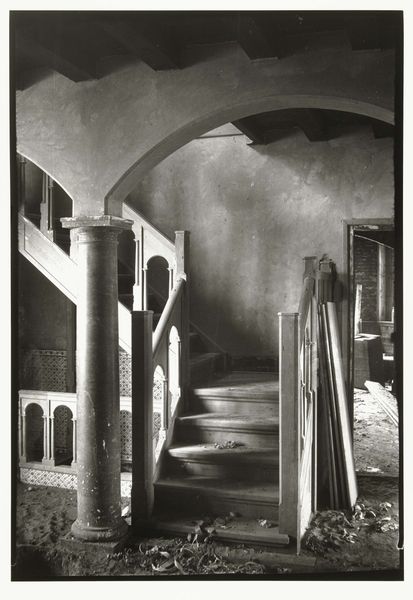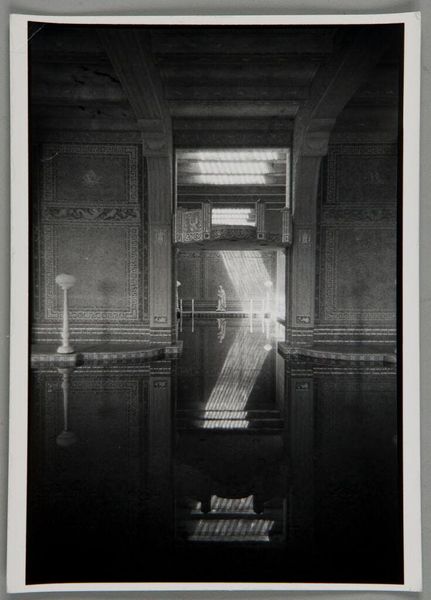
painting, wood
#
baroque
#
painting
#
perspective
#
black and white
#
monochrome photography
#
line
#
wood
#
cityscape
#
monochrome
#
monochrome
Dimensions: 28 cm (height) x 22 cm (width) (Netto)
Curator: This is Daniël de Blieck’s "A Colonnade," an oil on wood painting completed in 1658 and currently housed in the SMK, Statens Museum for Kunst. Editor: Wow, it feels like peering into a ghostly memory. So monochromatic, yet so meticulously structured. Like a beautiful, haunted stage set. Curator: The composition is a masterful exercise in perspective. De Blieck uses the colonnade to create a series of receding planes, drawing the eye towards the light-filled cityscape beyond. Observe how the architectural elements are rendered with almost mathematical precision, emphasizing the rational order of the Baroque period. Editor: That receding perspective definitely does something, doesn't it? It's not just technical skill; it creates a longing, a sense of endless possibilities just out of reach. Even in its stark monochrome, it vibrates with this hushed potential. The light beyond almost aches to be seen. Curator: Precisely. The interplay of light and shadow is critical. The stark contrasts highlight the geometry of the architecture. Semiotically, the columns could represent pillars of society or knowledge, and the open sky hints at transcendence or enlightenment. The artist deliberately limits our colour palette to intensify the structural components. Editor: Hmm... for me, it's less about semiotics and more about raw feeling. Looking at that almost bare light at the end, the architectural structures feels both incredibly inviting, and claustrophobic! The limitations make the feeling palpable. Maybe de Blieck wasn’t building towards the transcendental at all. Curator: It's a testament to the painting's strength that it can invite so many interpretations. Consider too the recurring Baroque motif of cityscapes. The controlled, geometrical elements contrast greatly with any notion of nature - reinforcing mankind's desire to assert itself over it. Editor: Agreed. Even without color, the piece sings. Or whispers. Thanks to its precise artistry, but also, perhaps ironically, to a heavy and persistent melancholy it projects outward onto our vision. A quiet kind of masterpiece, then. Curator: Yes, a study in measured contrasts and suggestive, if muted, statements. A painting that truly earns repeated viewings and reflective engagements.
Comments
No comments
Be the first to comment and join the conversation on the ultimate creative platform.

